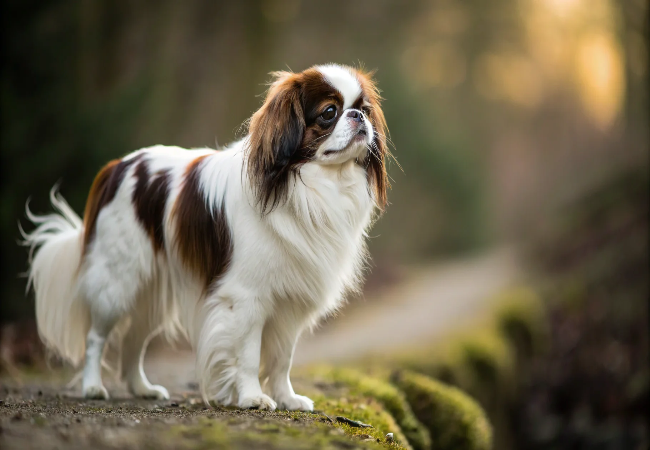Japanese Chin 2025 Guide: Temperament, Care & Training 🐶

In this article
Japanese Chin 2025 Guide: Temperament, Care & Training 🐶
By Dr. Duncan Houston BVSc
The Japanese Chin is a regal and sensitive toy breed with a silky coat, feline agility, and a deeply expressive personality. Bred as a companion for Japanese nobility, this charming little dog excels as a quiet, refined lapdog. In this complete 2025 guide, you’ll learn how to care for, train, and bond with the delicate and dignified Japanese Chin. 🐾
📜 Breed Origins
Despite the name, the Japanese Chin likely originated in China or Korea and was gifted to the Japanese Imperial Court. Its role was strictly companionship—not work—making it one of the most ancient lapdog breeds. 🇯🇵
🧠 Temperament & Personality
This breed is graceful, charming, and emotionally intelligent. Traits include:
- Quiet: Rarely barks unless truly necessary
- Affectionate: Bonds deeply with their chosen person
- Alert: Watches the home attentively from high perches
- Catlike: Known for climbing and grooming behaviors
🏡 Ideal Home Environment
Japanese Chin prefer peaceful, stable surroundings:
- Ideal for apartments or smaller, quiet homes
- Great for seniors or calm individuals
- May not tolerate rough play from small children
They are indoor dogs who enjoy soft beds and sunny windows. 🏡
✂️ Coat Type & Grooming
The Chin’s long, fine coat needs regular grooming to stay pristine:
- Brushing: 3–4 times per week with a soft pin brush
- Bathing: Every 4–6 weeks or when needed
- Ear/Nail Care: Clean ears weekly and trim nails monthly
- Face Cleaning: Wipe daily if tear staining is present
🏃♂️ Exercise & Enrichment
Although playful, Japanese Chin don’t need intense activity:
- Short walks (20–30 minutes) or indoor play daily
- Interactive toys and puzzles for mental enrichment
- Safe furniture access for climbing and observing
They enjoy watching the world more than racing through it. 🧠
🍗 Nutrition & Feeding
Feed a toy-breed diet with coat, dental, and digestive support:
- Small kibble sizes with chicken, lamb, or fish protein
- Omega-3s for skin and coat health
- Dental chews and crunchy textures to reduce plaque
Feed two small meals daily. Customize plans at Ask A Vet. 🍽️
🩺 Common Health Concerns
This breed is relatively long-lived (12–16 years) but may experience:
- Heart murmurs: Common in older Chins—monitor with vet care
- Eye injuries: Prominent eyes can be easily scratched
- Dental disease: Brush daily and schedule cleanings
Use Ask A Vet to track health changes and get advice. 🩺
🎓 Training & Socialization
This breed is responsive but sensitive. Training tips include:
- Use gentle voice, touch, and treats for reward
- Socialize carefully to avoid fear or overstimulation
- Housebreaking may take time—crate training helps
🧘♂️ Emotional Needs
Japanese Chin are emotionally sensitive and easily stressed:
- Stick to calm routines and quiet affection
- Keep them close—lap time is vital
- Provide cozy hideaways to retreat from chaos
Behavioral questions? Ask a vet via Ask A Vet. 🧠
🏁 Final Thoughts: Is the Japanese Chin Right for You?
If you're seeking an elegant, quiet, and deeply affectionate companion with a unique personality and minimal exercise needs, the Japanese Chin may be your perfect match. With the right care, this small dog becomes an enormous heartwarming presence. ❤️
Need help planning care for your Japanese Chin? Start a consult at Ask A Vet today!






